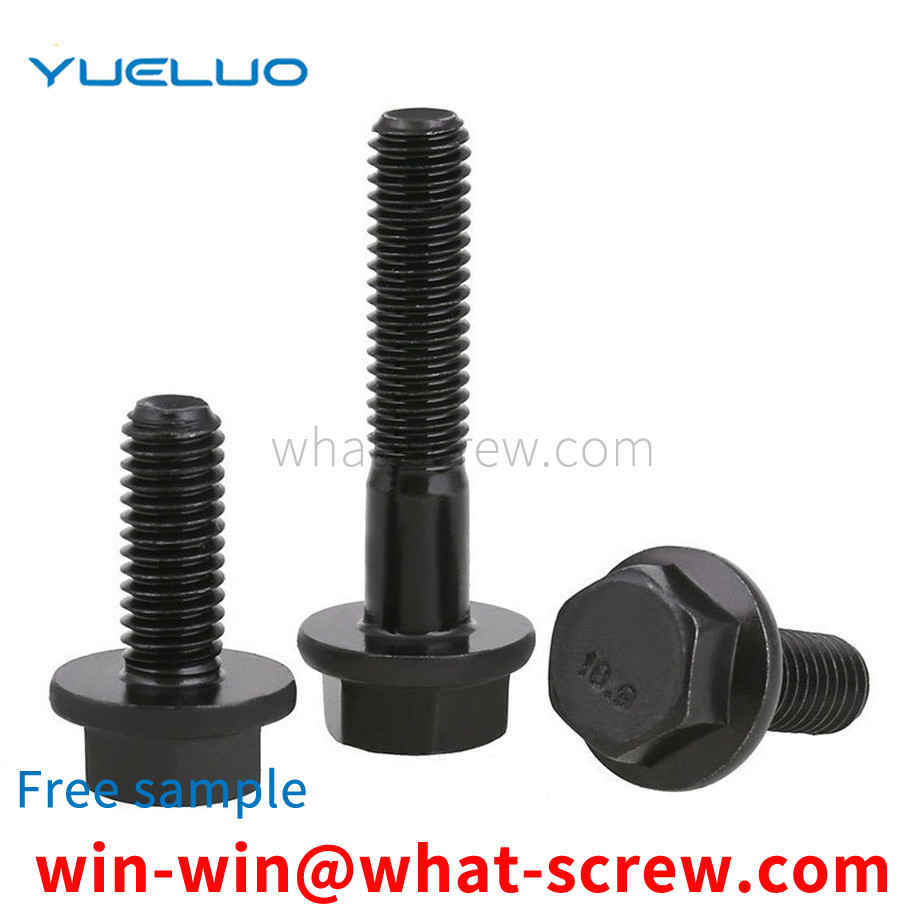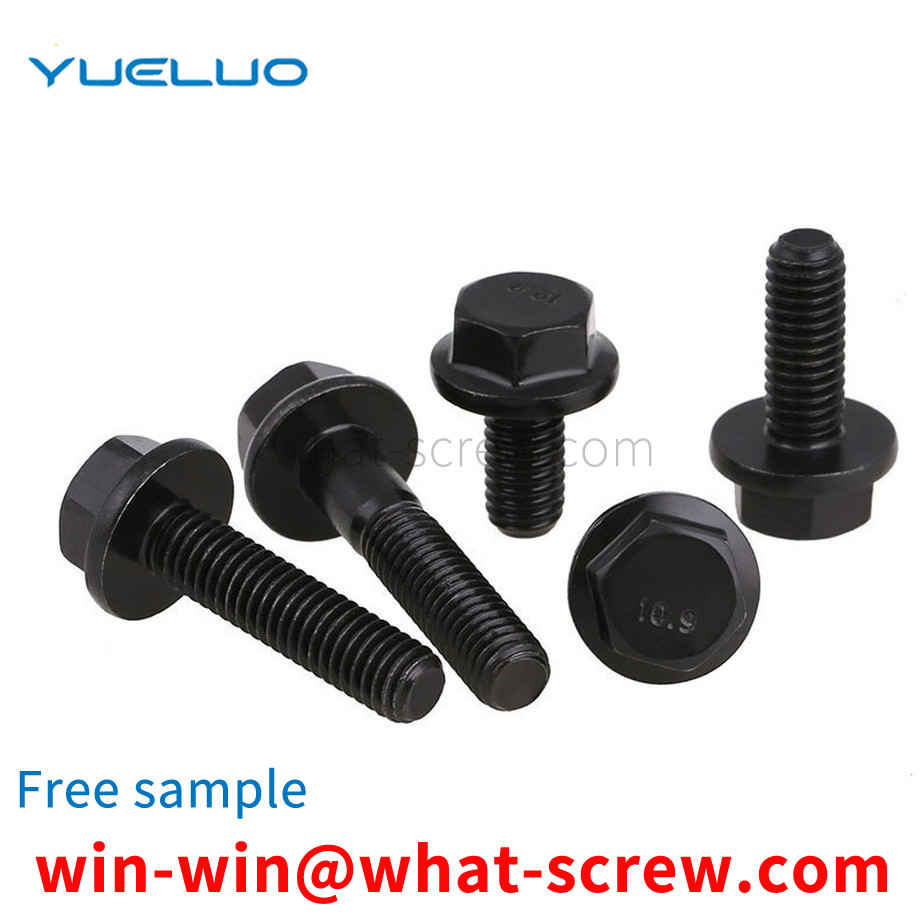According to the process, the wing nut can be divided into cold heading wing nut, casting wing nut and stamping wing nut. According to the shape, it can be divided into two basic shapes: square wing and round wing. According to the national standard number, it can be divided into GB/T62.2-2004 Square Wing Wing Nut Wing Nut Round Wing Wing Nut Round Wing GB/T62.1-2004 Round Wing Wing Nut
High-strength fasteners must be quenched and tempered according to technical requirements. The purpose of heat treatment and tempering is to improve the comprehensive mechanical properties of fasteners to meet the specified tensile strength value and yield ratio of the product. The heat treatment process has a crucial impact on high-strength fasteners, especially its intrinsic quality. Therefore, in order to produce high-quality high-strength fasteners, advanced heat treatment technology and equipment must be available. Due to the large production volume and low price of high-strength bolts, and the threaded part is a relatively fine and relatively precise structure, the heat treatment equipment is required to have large production capacity, high degree of automation, and good heat treatment quality. Since the 1990s, the continuous heat treatment production line with protective atmosphere has dominated, and the shock bottom type and mesh belt furnace are especially suitable for heat treatment and tempering of small and medium-sized fasteners. In addition to the good sealing performance of the furnace, the quenching and tempering line also has advanced computer control of atmosphere, temperature and process parameters, equipment failure alarm and display functions. High-strength fasteners are automatically controlled and operated from feeding-cleaning-heating-quenching-cleaning-tempering-coloring to offline, which effectively ensures the quality of heat treatment. The decarburization of the thread will cause the fastener to trip before the resistance required by the mechanical properties is reached, which will cause the failure of the threaded fastener and shorten the service life. Due to the decarburization of the raw material, if the annealing is improper, the decarburized layer of the raw material will be deepened. In the process of quenching and tempering heat treatment, some oxidizing gas is generally brought in from outside the furnace. The rust of the bar wire or the residue on the surface of the wire rod after cold drawing will also decompose after being heated in the furnace, and some oxidizing gases will be generated by the reaction. For example, the surface rust of steel wire, which is composed of iron carbonate and hydroxide, will be decomposed into CO₂ and H₂O after heating, thus aggravating decarburization. Studies have shown that the degree of decarburization of medium carbon alloy steel is more serious than that of carbon steel, and the fastest decarburization temperature is between 700 and 800 degrees Celsius. Because the attachments on the surface of the steel wire decompose and synthesize carbon dioxide and water very quickly under certain conditions, if the furnace gas of the continuous mesh belt furnace is not properly controlled, it will also cause excessive decarburization of the screw. When the high-strength bolt is formed by cold heading, the raw material and the annealed decarburized layer not only still exist, but also are extruded to the top of the thread. For the surface of the fastener that needs to be quenched, the required hardness cannot be obtained. Its mechanical properties (especially strength and wear resistance) decreased. In addition, the surface of the steel wire is decarburized, and the surface layer and the internal structure have different expansion coefficients, and surface cracks may occur during quenching. For this reason, during quenching and heating, the top of the thread should be protected from decarburization, and the fasteners whose raw materials have been decarburized should be properly carbonized, and the advantages of the protective atmosphere in the mesh belt furnace should be adjusted to the original carbon-coated parts. The carbon content is basically the same, so that the decarburized fasteners are slowly restored to the original carbon content. The carbon potential is preferably set at 0.42% - 0.48%. The carbon coating temperature is the same as the quenching heating, and cannot be carried out at high temperatures , so as to avoid coarse grains and affect mechanical properties. The quality problems that may occur in the process of quenching and tempering of fasteners mainly include: insufficient hardness in the quenched state; uneven hardness in the quenched state; excessive quenching deformation; quenching cracking. Such problems in the field are often related to raw materials, quenching heating and quenching cooling. Correctly formulating the heat treatment process and standardizing the production operation process can often avoid such quality accidents.
Stainless steel screws usually refer to steel screws that are resistant to corrosion by air, water, acids, alkali salts or other media. Stainless steel screws are generally not easy to rust and durable, and can be used in environmental protection equipment, medical equipment, communication equipment and other fields.
④ Screw tooth type A: Self-tapping sharp tail (Japanese standard type 1) sparse AB: Self-tapping sharp tail (Japanese standard type 4) dense; B: Self-tapping flat tail (Japanese standard type 2) sparse; C: Self-tapping Tapping flat tail (the third type of Japanese standard) dense; P: double wire teeth Type triangle teeth CCT: C type triangle teeth PTT: P type triangle teeth STT: S type triangle teeth
A rivet is a part that uses its own deformation or interference to connect the riveted parts in riveting. With the continuous progress and development of science, rivets have been used in many occasions because of their convenient use and reliable connection. The rivet includes a nail head and a stem. The traditional processing mold for the rivet head includes a base, and a nail head forming part is arranged on the base. However, due to the limited service life of the mold, the processing mold of this structure is replaced. It needs to be replaced together with the base, which is a waste of material, which increases the production cost, and the rivet itself is relatively cheap, so this reduces the profit of the enterprise.
We have many years of experience in the production and sales of screws, nuts, flat washers, etc. The main products are: circular positioning ring welding nuts, 4.8 grade hexagon screws, nylon / metal lock nuts, solid wood furniture nuts and other products, we can provide you with Provide the right fastener solution for you.



















 Service Hotline
Service Hotline




